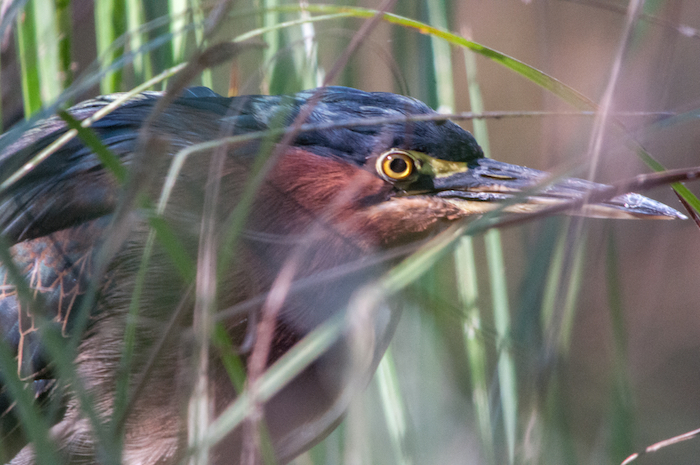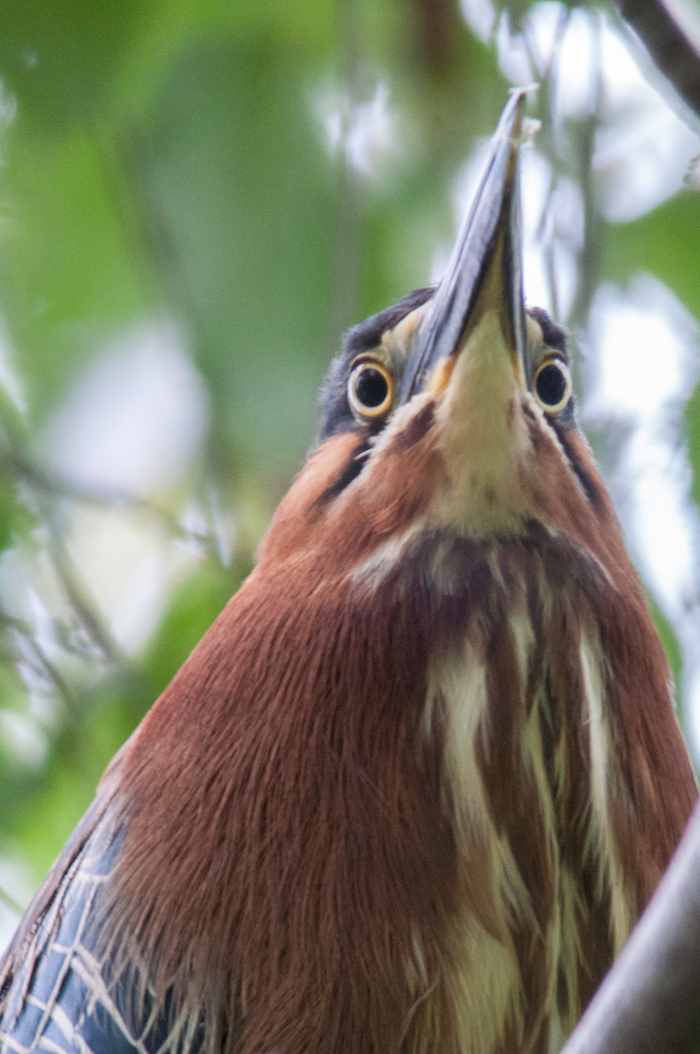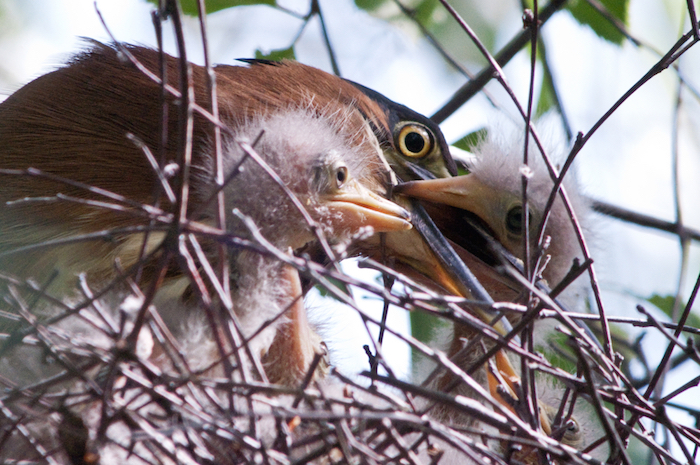
Green Heron (Butorides virescens) Hunting
Herons and egrets are some of our most elegant birds, standing regally or stepping slowly, with ballet precision and pointed intent. Indeed, it was the egrets’ showy white plumes that, hunted for use on fashionable ladies’ hats, helped spark the formation of the Audubon Society in 1905.
But the Green Heron is a scrappier member of the tribe. Low to the ground, darker, smaller, the bird is less striking than its cousins. But this time of year you may spot what looks like a football with wings flapping overhead as a green heron moves between riverbank and lakeside.
The birds are not so colorless as they likely appear to the unaided eye. A view with binoculars will reveal this little heron’s green umber back and crown, its rusty breast and cheeks, and frog-yellow legs and lores—the area between the eye and bill.
When looking for food, green herons typically huddle motionless at water’s edge, scanning for a minnow, snail, or other small animal that might make a meal. Their skulls hold their eyes with a downward slant, providing the binocular vision of hunters and directing their gaze where they want it, on the surface below.

Sometimes these little herons fish more actively: they use bait! Like just a few of their relatives, green herons have been observed repeatedly dropping insects, worms, or bread crumbs into the water and then snatching the small fish that are drawn in. Sometimes they even fish with their version of artificial lures—feathers or plant material. It is unknown whether this particular skill is genetically inherited, culturally learned, or individually discovered.
Each spring, following their optional migration, green herons court with wing-flapping and bill-clacking. The male chooses a nest site, either in a green heron neighborhood or in a more isolated spot, and either in a tree or on the ground. He coaxes his mate with various heron dance moves, including swaying back and forth with his bill pointed skyward. Then he typically frames their nest with a collection of thin sticks. He continues to bring sticks, but the female takes over their placement to meet her standards—which vary from flimsy to substantial.

Green Heron Nestlings Feeding
She lays about four pale green-bluish eggs, which both parents incubate for about three weeks. The helpless hatchlings rely completely on their parents, who feed them by regurgitation. After several weeks of such fare, the young begin to catch their own food.
Green herons live near quiet waters from the northern arc of South America up through Mexico and, in the summer, up into Vancouver. East of the Mississippi they nest throughout the States, but are declining there, probably due to loss of wetlands. The California population is thriving, and in the Redding area green herons are common during the breeding season and can be spotted occasionally even in the winter.
